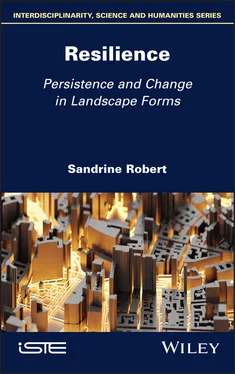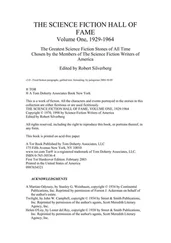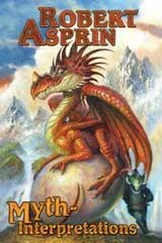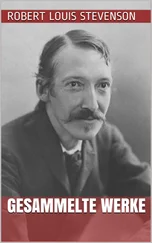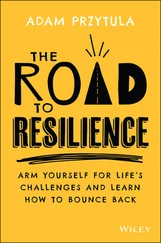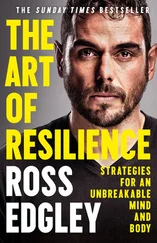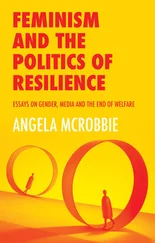Library of Congress Control Number: 2021948134
British Library Cataloguing-in-Publication Data
A CIP record for this book is available from the British Library
ISBN 978-1-78630-666-1
This book has its origins in the professoral thesis, or HDR 1 , which I defended on January 9, 2020 at the University of Paris 1 Panthéon-Sorbonne 2 .
I would like to thank Lena Sanders, my supervisor for this work, and the members of the review committee: Étienne Anheim, Jean-Marc Besse, Claude Raynaud, Magali Reghezza-Zit and Sander Van der Leeuw.
This work owes much to valuable discussions and exchanges within research groups I have attended, notably the GDR 2137 TESORA , Traitement de l ’espace des sociétés rurales anciennes , coordinated by Gérard Chouquer (CNRS); the ANR program, Alpage ; Analyse diachronique de l ’espace parisien: approche géomatique , coordinated by Hélène Noizet (University of Paris 1); and the Dynamique des systèmes de peuplement dans la longue durée group, coordinated by Lena Sanders, Marie-Vic Ozouf-Marignier, and Patrice Brun at the Laboratoire d ’excellence : Dynamiques territoriales et spatiales (LabEx DynamiTe, ANR project overseen by the University of Paris 1). The ArchéoFab program, Archéologies du Bassin parisien, réseau de sites et réseau d’acteurs at the ArScAn (UMR 7041), directed by Laurent Costa and Christophe Petit, has also provided constant support since 2003. On an international scale, discussions within the Theory and Methods in Landscape Archaeology-Archaeogeography group, which I founded in 2011 under the umbrella of the International Union of Prehistoric and Proto-Historic Sciences (UISPP), have also been a rich source of information and inspiration.
The École des hautes études en sciences sociales (EHESS), to which I belong, is a multi-disciplinary institution, providing a stimulating and wide-ranging research environment. My colleagues, notably Nicolas Verdier and Marie-Vic Ozouf-Marignier, provided constant encouragement and support over the course of this project and for that I am truly thankful.
I would also like to thank Sébastien Le Pipec for his help with my translations, and to Marta Berbès-Blàzquez, William Found, Lance Gunderson, Marten Scheffer and Brian Walker who allowed me to translate and make use of their illustrations, in some cases with my own additions; François Durand-Dastès, who kindly provided me with an updated version of his systemogenesis diagram; and Laurent Costa, who was able to transform my somewhat abstract ideas into helpful diagrams, leading to the illustrations to be found in this book.
Finally, heartfelt thanks to Laurent, Hadrien and Jean-Baptiste, my support team throughout the whole process. To them I dedicate this book.
1 1In the French university system, the Habilitation à diriger les recherches (HDR) is a postdoctoral qualification that gives access to higher level university teaching posts (e.g. professorships). Obtained on the basis of a reviewed publication (thesis), the HDR is also a prerequisite for directing PhD students.
2 2Original title: Résiliences et circulations dans les formes du paysage. Parcours en archéogéographie. This book is based on volume 2, entitled La résilience : un cadre pour penser la persistance et le changement dans les formes du paysage.
Landscapes are constantly changing and evolving. From rural settings to cities, things appear, disappear or are replaced on a daily basis. But traces of the past are all around us: paths, buildings and hedges all betray the presence of former populations. Taking a bird’s eye view, using planimetric documents (maps, topological surveys, etc.) in conjunction with modern aerial photography, the coexistence of old and new is plain to see. The layout, or ground footprint, of elements in a landscape (buildings, paths, hedges and ditches, fields, gardens, and so on) tends to subsist for far longer than the most apparent forms, which we encounter in our daily lives. In what follows, the terms “shape” and “ground footprint” will be used to distinguish between these two layers. The “ shape” of a landscape is that which we see directly. This term, borrowed from the field of topography, is used in archeogeography to refer to all types of forms in three-dimensional space (i.e. “volumes”), be they man-made or of natural origin (Chouquer 1997a, p. 15). The space which the volume occupies on the ground, that is, its footprint, is a two-dimensional form, seen from above, which can be mapped. In archeogeography, the ground footprint of elements in a landscape has been referred to as the tracé en plan (map trace; Chouquer 1997a, p. 15), forme en plan(plan form) or tracé(trace; Robert 2003a, p. 117 and 127).
In the context of this work, the word “landscape” is used essentially to refer to the material dimension, but territorial boundaries enshrined in law (land boundaries and territorial district boundaries) are also taken into account. Although these limits are not necessarily visible on the ground, they are clearly shown on maps and land registers, and are remarkably persistent relics of earlier forms of landscape organization. While the shape of town districts, land holdings, roads, drainage and irrigation networks, habitat distribution patterns, etc., has undergone dramatic changes over time, these elements are rooted in earlier, persistent ground footprints and divisions. Landscape is like the ship of Theseus, kept in harbor by the Athenians, who progressively replaced each plank as it rotted until the whole ship had been replaced. Elements in a landscape undergo constant renewal, while retaining, to some extent, the identity of the earlier landscape. This interweaving and internesting of past and present, bearing the marks of successive generations of change, raises questions concerning the coexistence of these multiple forms.
Researchers have studied landscape evolutions, by means of morphological analysis, since the 19th century. In Part 1of this book, we shall consider the way in which authors have apprehended the dynamics of shape and have conceptualized persistence and change in the forms of a landscape. Different approaches have been used in specific contexts of spatial and social change; morphological analysis, as a scientific approach to the study of landscape, has moved from an essentially cognitive to an essentially normative approach and repeated over time. For this reason, the approaches taken by researchers interested in the “temporal” aspects of landscape change (archeologists, geographers, historians, etc.) are presented alongside the approaches taken by those involved in shaping our current habitat (architects, urban planners, etc.). In this way, we aim to highlight the articulations and distinctions between temporal and spatial aspects in architecture and urban planning. Leaving behind the traditional approach, in which the continuity of forms in a landscape is seen in terms of inertia or as a form of palimpsest, we shall show how the notions of complex systems, self-organization and resilience provide a new and effective framework for morphological landscape analysis. Particular attention will be paid to the concept of ecological resilience and its application to the field of archeogeography, notably with respect to the multiple temporalities at work in landscape systems.
Part 2concerns the emergence and development of the conceptual framework of resilience, particularly in the context of ecology. Research into resilience first began in the 1970s, following on from the adoption of the complex system and self-organization paradigms; this concept provides a way of accounting for temporal dynamics and allows us to address interactions across multiple levels in the organization of complex systems. Initially limited to the fields of physics, psychology and ecology, the concept of resilience only really took off in the late 2000s, in the context of campaigns to draw attention to the need for action to combat climate change and manage catastrophes. Moving out of the purely cognitive field, the term “resilience” has taken on multiple meanings and multiple implications. In this book, we shall focus on the conceptual framework of “ecological” resistance, as developed by the Canadian ecologist Crawford S. Holling and promoted by the Resilience Alliance network. Ecological resilience is a powerful heuristic concept with the ability to change our perception of the way in which interactions between societies and milieux evolve. We thus present the concept of resilience as a property of social-ecological systems, before describing the ways in which it has been used in analyzing spatial systems and landscapes in the fields of archeology, geography and archeogeography. Particular attention will be given to the place assigned to heritage and inherited patterns in current dynamics. The traditional approach to the perception of time in landscape, presented in Part 1, forms the backdrop for a discussion of the concept of resilience in this context, in which we consider whether or not this concept is really a new approach to change, or if it is simply a new mask laid over an old idea.
Читать дальше
